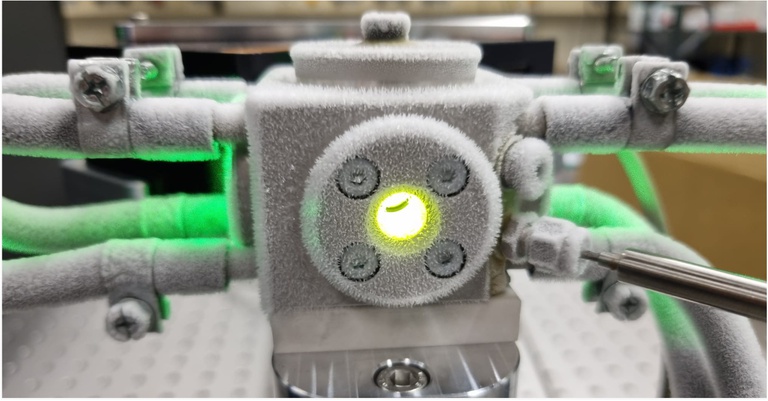January 2024
Combustion engines, aircraft turbines, and especially rockets may be operated under extreme environmental conditions. The liquid fuel is injected at very low or even cryogenic temperatures. It may show a very high viscosity and surface tension so that injection and atomization of the fuel is completely different to normal conditions. This could result in fuel film formation on the walls or very large liquid fuel structures or droplets in the combustor. This study investigates spectral laser-induced fluorescence (LIF) signals of special dyes in fuels for automotive and aerospace applications under low temperatures and cryogenic conditions for studying liquid atomization and thermometry. For this purpose, a fluorescence chamber was developed based on cooling with liquid nitrogen. The design enabled a minimal inner chamber temperature of 153 K. The applicability of two-color LIF for liquid thermometry was evaluated for two different fluorescence dyes dissolved in kerosene, gasoline surrogate fuels and biofuel blends for aerospace and automotive applications.
The article is freely available here:
https://doi.org/10.3390/s24030724
We acknowledge financial support by Universität der Bundeswehr München (UniBw M).
The photo shows first tests of the cryo LIF chamber without insulation (M. Koegl, UniBw M)
